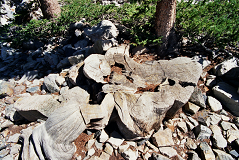Extreme Ironing is an extreme sport in which people take an ironing board to a remote location and iron items of clothing. According to Extreme Ironing Bureau, extreme ironing is "the latest danger sport that combines the thrills of an extreme outdoor activity with the satisfaction of a well-pressed shirt."
Some locations where such performances have taken place include a mountainside of a difficult climb; a forest; in a canoe; while skiing or snowboarding; on top of large bronze statues; in the middle of a street; underwater; in the middle of the M1 Motorway; whilst parachuting and under the ice cover of a lake. The performances have been conducted solo or by groups.
Extreme Ironing started in the city of Leicester in the UK, in the summer of 1997. When mild mannered Steam, returned home after a long day in the knitwear factory, the last thing he wanted to do was start on a pile of ironing. The sun was shining and Phil preferred the idea of an evening out pursuing his hobby of rock climbing. Then it occurred to him to combine these activities into an extreme sport and the result was the sport of extreme ironing. In the beginning extreme ironists used very long extension cords, but now they use battery powered irons.
(Source)
(Source)














